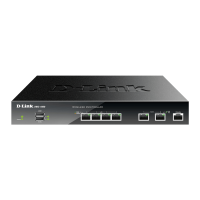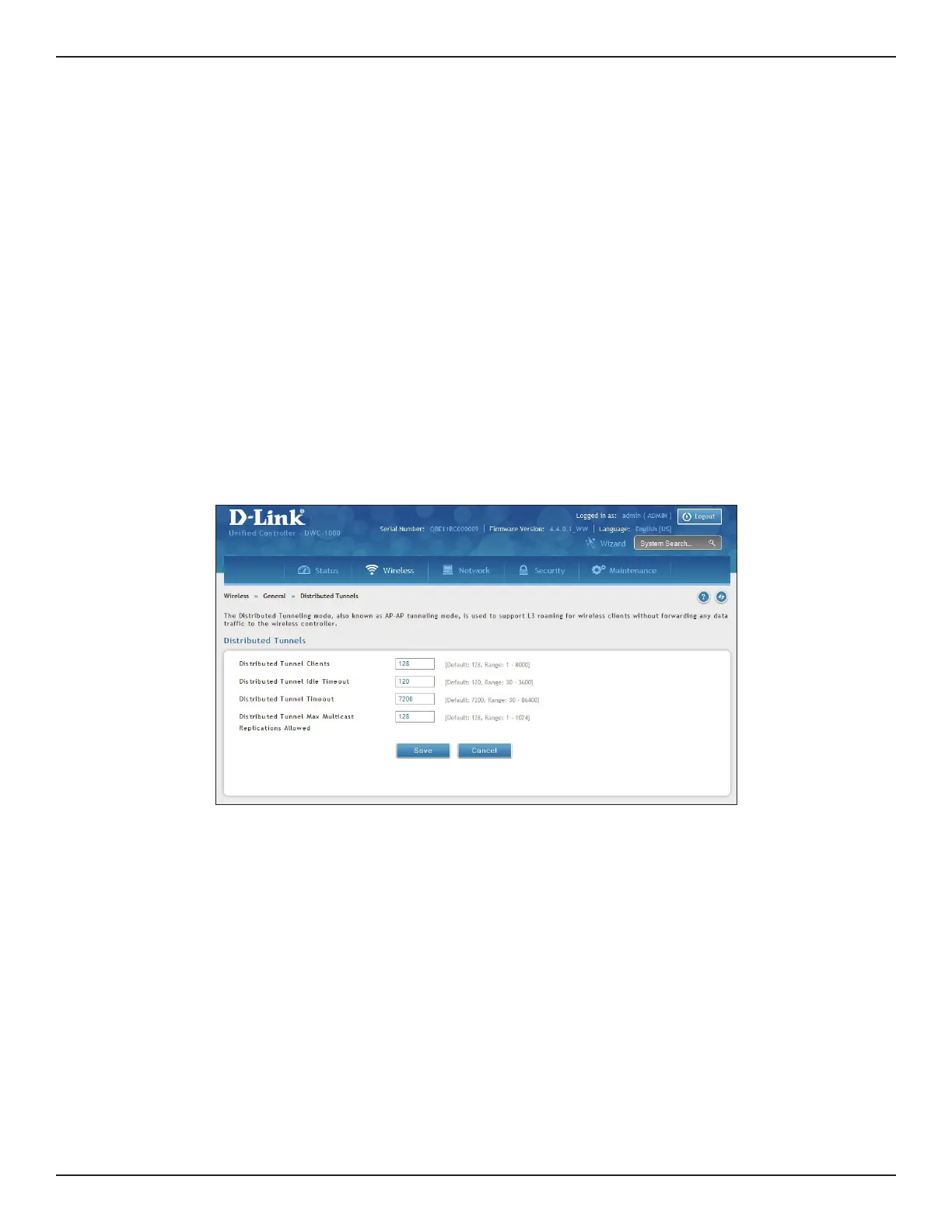D-Link DWC-1000 User Manual 92
Section 4 - Advanced WLAN Conguration
Distributed Tunnel
The Distributed Tunneling mode, also known as AP‐AP tunneling mode, is used to support L3 roaming for
wireless clients without forwarding any data trac to the wireless controller.
In the AP‐AP tunneling mode, when a client rst associates with an AP in the wireless system, the AP forwards its
data using the VLAN forwarding mode. The AP to which the client initially associates is the Home AP. The AP to
which the client roams is the Association AP.
When a client roams to another AP in a dierent subnet the Association AP tunnels all trac from the client to
the Home AP using a CAPWAP L2 tunnel. The Home AP injects the trac received over the tunnel into the wired
network. If a client roams to another AP in the same subnet then the tunnel is not created, and the new AP
becomes the Home AP for the client.
Path: Wireless > General > Distributed Tunnels
1. Click Wireless > General > Distributed Tunnels.
2. Congure the following settings:
• Distributed Tunnel Clients - Specify the maximum number of distributed tunneling clients that
can roam away from the Home AP at the same time.
• Distributed Tunnel Idle Timeout - Specify the number of seconds of no activity by the client
before the tunnel to that client is terminated and the client is forced to change its IP address.
• Distributed Tunnel Timeout - Specify the number of seconds before the tunnel to the roamed
client is terminated and the client is forced to change its IP address.
• Distributed Tunnel Max Multicast Replications Allowed - Specify the maximum number of
tunnels to which a multicast frame is copied on the Home AP.
3. Click Save.

